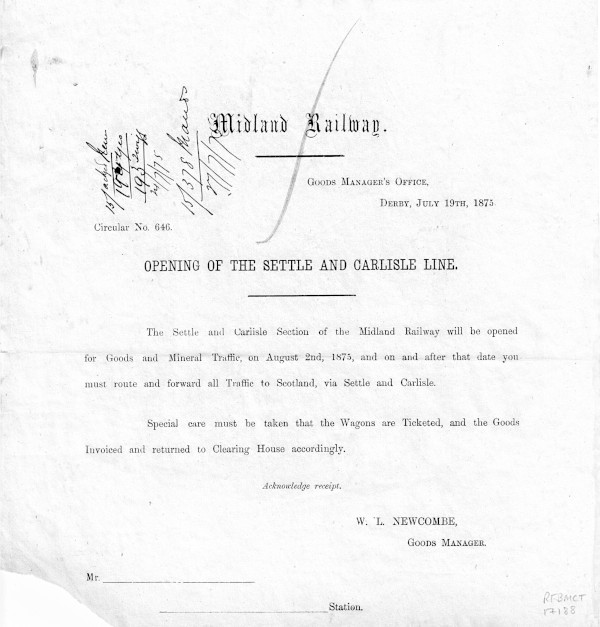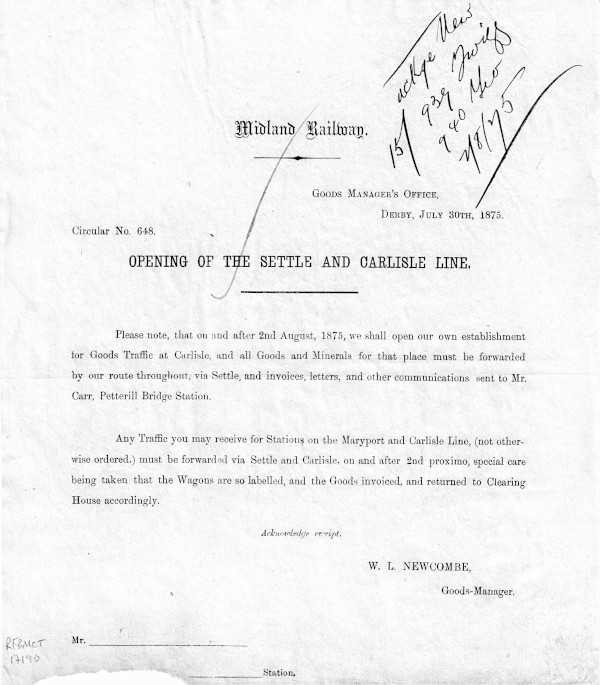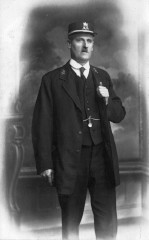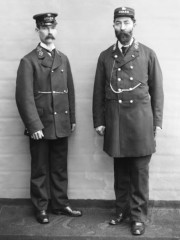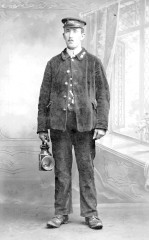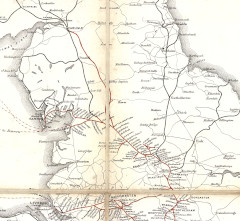The Settle & Carlisle Railway (S&CR) officially opened for goods traffic on 2 August 1875.[1]
The event was heralded in a pair of circulars issued from the Goods Managers Office in Derby during July 1875:
Immediately prior to the opening, a large number of staff were transferred to locations along the S&CR from other parts of the Midland Railway Company's network. The following extract from the Saturday 31 July 1875 edition of the Bradford Observer provides a fascinating insight into this relocation exercise:
THE SETTLE AND CARLISLE RAILWAY. - Thursday evening witnessed the influx of about 100 railway employees, consisting of station-masters, goods porters, pointsmen, &c., into Skipton from various parts of the country, who had been summoned from their various posts to work the new line between Settle and Carlisle. Each of the inns and hotels in the town had its complement of strangers, who created some little curiosity among the inhabitants. They were all conveyed to their respective new quarters by a special train early yesterday morning. About thirty of the men were destined for Carlisle station. The first goods train over the new line will leave Leeds on Monday next, after which the goods traffic will be regularly continued.
Sadly, we don't have any photographs of those employees. However, it is likely that they would have worn Midland Railway Company uniforms similar to those shown in the photographs below.
There was no ribbon-cutting or formal opening ceremony, but the events were reported in the local press.
Penrith Observer, 3 August 1875:
OPENING OF THE SETTLE AND CARLISLE RAILWAY - The formal opening of the Settle and Carlisle (Midland) extension took place yesterday (Monday), for goods traffic only. On Sunday eight powerful engines passed over the entire length from Settle to Carlisle. One of the engines, to which a saloon carriage was attached, conveyed a number of directors and officials, the latter taking their respective stations on the route to be in readiness to assume their duties. The line was put to a severe test throughout. Five powerful engines, attached together, each over forty tons, went first, and the other three followed at intervals. The first arrived at Appleby Station at twelve o'clock; the other two coupled together, with a number of vans, at half past one; and the last, with the directors, at three o'clock, and proceeded thence to Carlisle. On Monday the first train of goods wagons from Carlisle passed the station at Appleby at twelve o'clock. All passed off well and without any accident. There is still a great deal of work to be done on the first and second sections before the line will be ready for passenger traffic, which is not likely to take place before the end of the year at least.
Carlisle Express and Examiner, 7 August 1875:
SETTLE AND CARLISLE RAILWAY. - OPENING FOR GOODS TRAFFIC - On Monday morning the Settle and Carlisle Extension of the Midland Railway was opened for goods traffic. The first train from Carlisle was started at half-past eleven o’clock, several dozens of people having gathered to witness it, both at Petteril and Durran Hill bridges. The train consisted of sixteen vehicles including engine, tender, van, and a saloon carriage, the latter carrying several of the principal officials. The cargo was miscellaneous, and the train started off, without the slightest demonstration of any kind, at a rate of twenty or twenty-five miles an hour. A second train was despatched in the afternoon.
Putting the S&CR on the map
The route of the S&CR is depicted on the accompanying extract from the 1875 Midland Railway System Map for England, Wales & Scotland (see right or below) and the following are worthy of note:
- The station labelled Settle (on the 'Little' North Western Railway's line to Ingleton, Wennington, etc.) is now known as Giggleswick.
- The S&CR stations are not labelled as they weren't open for passenger traffic when the map was produced.
- Most junctions don't warrant a label in their own right, but Settle Junction has been prominently labelled (thereby drawing attention to the starting point for the Company's new route to Carlisle and beyond).
- A high-resolution digital version of the full map can be downloaded from the website of the Midland Railway Study Centre (Derby) by searching for Item Number RFB20565 in the catalogue via the link provided in the acknowledgements section below.
Acknowledgements and external links
The contemporary accounts were transcribed by Mark R. Harvey from digitised versions of the relevant newspapers, accessed via the British Newspaper Archive (https://www.britishnewspaperarchive.co.uk/).
All of the images on this page are reproduced courtesy of the Midland Railway Study Centre (MRSC), Derby (https://www.midlandrailwaystudycentre.org.uk/). In all cases, the original images have been modified to:
- remove age-related yellowing (for the circulars and black & white photographs only),
- increase the contrast (and thereby improve clarity / readability),
- remove untidy edges and / or irrelevant content, and
- reduce their size (to speed-up page-loading and downloading times without adversely affecting readability).
The map extract has been further modified, as indicated in the body text above.
Copies of the original images can be downloaded from the MRSC's online catalogue via the link above.
As with the originals, the modified versions used on this webpage are licensed under a Creative Commons Attribution-NonCommercial-ShareAlike 4.0 International License. For full details of this license, see https://creativecommons.org/licenses/by-nc-sa/4.0/.
Footnotes
[1] This was the official opening of the full length of the S&CR for goods traffic. However, lime & limestone were being despatched by rail southwards from Stainforth as early as 1873 (and possibly 1872). The official opening for passenger traffic was 1st May 1876.

